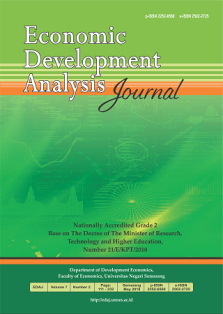Structural Break and The Period of Indonesia’s Post-Pandemic Economic Recovery
Abstract
The Covid-19 pandemic in 2020 caused economic contraction of 2.07 percent in Indonesia. Knowing the similar economic conditions in the past period and how long is the period of Indonesia's economic recovery after the pandemic are important. Therefore, this study aims to determine the period of economic structural break that has occurred in Indonesia and to determine the period of economic recovery. The analytical method used is the Bai-Perron, cointegration test, and VECM. The variables used are economic growth, exports, and inflation. The results of this study indicate the occurrence of structural break periods in the Indonesian economy in 1989, 1998 and 2004. Furthermore, based on the long-term VECM equation, exports have a positive but insignificant effect on economic growth. In contrast, inflation has a significant negative impact on economic growth. By using the IRF, it showed that economic growth will achieve stability or recovery after the occurrence of shocks to economic growth itself within a period of 5 to 10 years. If there is a shock to exports, economic stability can be achieved in a period of 5 to 10 years. Meanwhile, if there is a shock to inflation, stability can be achieved in less than 5 years.


